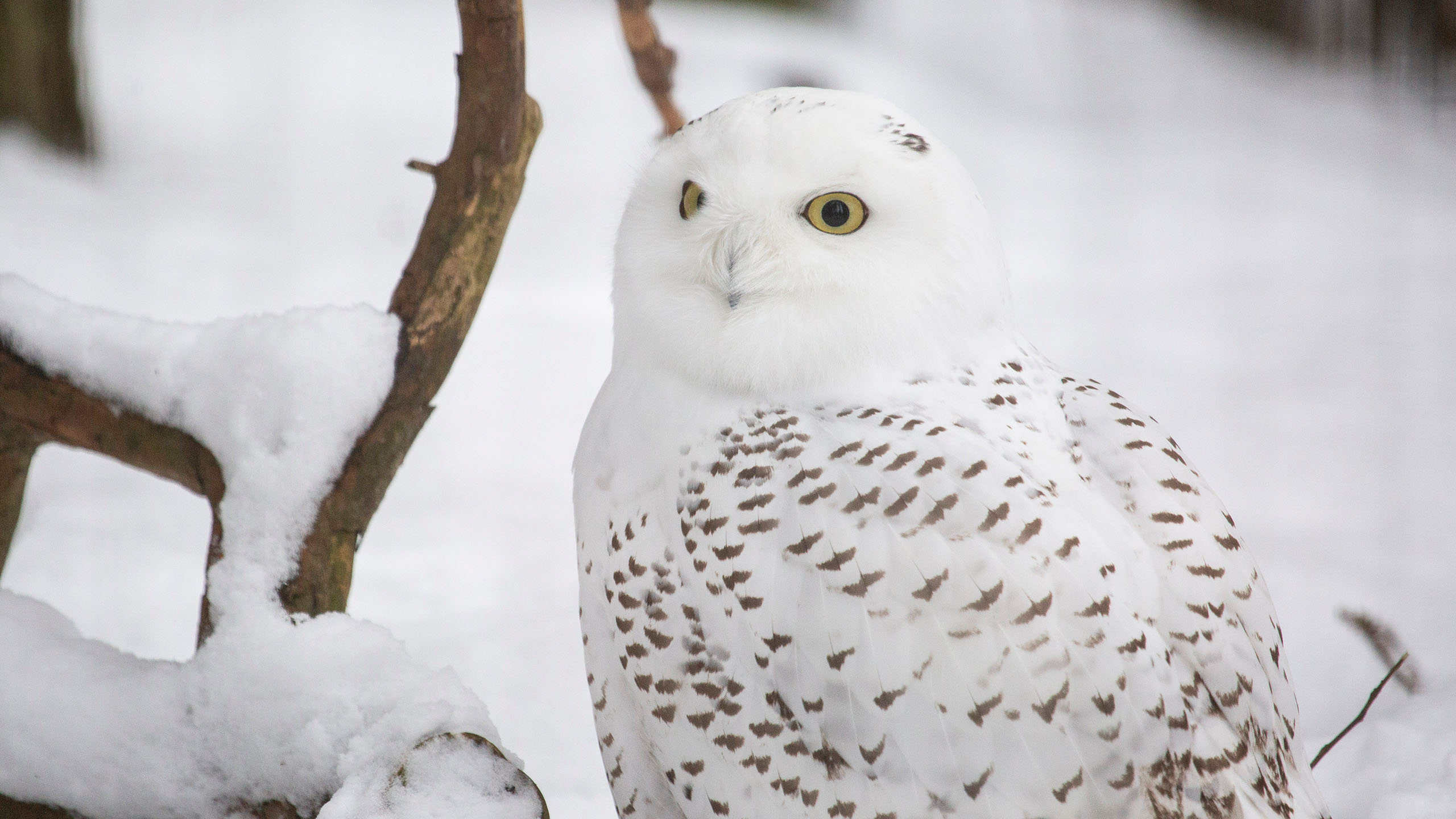
Snowy owl
Bubo scandiacus
The snowy owl is very well adapted to a cold climate. It has tiny air bubbles in its feathers that provide insulation against cold weather, and its thick plumage extends all the way to the tips of its toes. The adult male is white in colour. The female, which incubates eggs in the springtime in a scrape built on terrain with alternating snowy and thawed-out spots, has dark spotting on its plumage. The owlets hatch in the summer and have dark grey protective colouring.
The vole and lemming populations in the north can vary greatly from one year to the next, as well as regionally. When food is scarce, the snowy owl migrates to areas with more prey. As a result, snowy owls lead a nomadic life throughout the Northern Hemisphere. Nesting in Finland is very rare.
Conservation
In the summer of 2021, the snowy owl was included in the EAZA Ex-situ Programme (EEP), which aims to keep the species’ zoo population viable. The EEP programme is coordinated by Korkeasaari Zoo’s curator Ville Vepsäläinen.
The ultimate purpose of the programme is to make reintroductions to the wild possible in the future, should the situation of the snowy owl in the wild deteriorate further. Reintroductions from Korkeasaari Zoo have also been carried out in the 1990s in the Kilpisjärvi area of Northern Finland.

